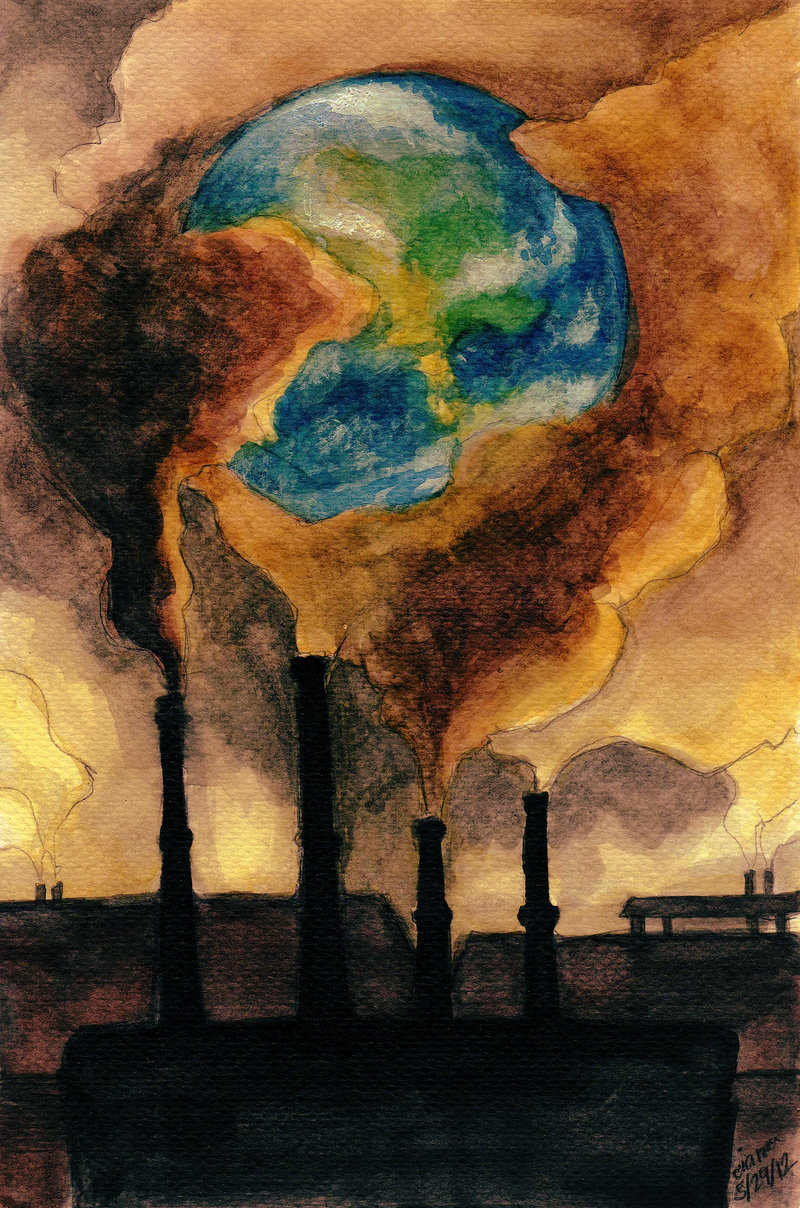 (Illustration: ‘Landscape of Change,’ by Jill Pelto, and found here).
(Illustration: ‘Landscape of Change,’ by Jill Pelto, and found here).
Hot and dry this Saturday afternoon here in California’s Central Valley, and though it’s warm, it’s nothing like the last week or so. Outside it’s even comfortable, but I should enjoy it while I can, forecasts for the temperature-burners to be lit-up again starting next week.
This post is kind of a continuation of the one this morning — too much heat on a hot subject.
We’ll venture a look at the underpinnings of the horrific situation. Along with the well-known and much-used ‘climate change,’ or ‘global warming,’ there another phrase I’ve never heard of, but seemingly has been around a while, and carries a hardcore definition — from The Washington Post this morning:
Another physical phenomenon, called the Clausius-Clapeyron equation, shows that for every 1 degree Celsius (1.8 degrees Fahrenheit) of warming, the atmosphere can hold 7 percent more moisture. This means that warm conditions make storms much wetter, leading to record-breaking rainfall events like Hurricane Harvey in 2017.
Scientists have been aware of these phenomena for decades, and have long warned about the potential for even moderate amounts of global warming to trigger catastrophic weather extremes.
The heat being so devastating should be a warning sign for all of us.
The 2015 Paris Climate Agreement calls for humanity to limit global warming to “well below” 2 degrees Celsius. A subsequent report from United Nations scientists found that warming beyond 1.5 degrees Celsius would trigger catastrophic sea level rise, near-total loss of coral reefs and a calamitous increase in the frequency and intensity of natural disasters.But the world is unlikely to meet either of those goals. Most countries have not reduced greenhouse gas emissions nearly enough to meet targets set in the Paris agreement.
Even if they meet their existing pledges, researchers say the world has just a 5-percent chance of keeping warming “well below” 2 degrees.
Those on the frontlines of the climate disaster are pessimistic –Michael Wehner, a climate scientist at Lawrence Berkeley National Laboratory in California, on the overbeaing heat wave:
“It’s well beyond what straightforward statistical analysis would suggest. It’s well beyond what climate models suggest,” he continued. “But it happened.”
…
“But there are other, nonlinear, things going on,” Wehner, adds.For example, heat causes water to evaporate from vegetation and soil, which uses up energy and helps bring temperatures down — a phenomenon called evaporative cooling. But climate change has made the West both hotter and dryer. As the mercury ticks upward, the landscape becomes even more parched, which allows it to heat up even faster. Now, more than 93-percent of the American West is in moderate to severe drought, according to the U.S. drought monitor.
…
“It’s a very different planet at those levels,” Wehner said. “This is really serious. As a society, as a species, we’re going to have to learn to adapt to this. And some things are not going to be adaptable.”
…
Speaking over the phone, Wehner’s tone was somber as he discussed the wildfire smoke that choked California last summer, people whose homes burned down, a friend whose 90-year-old mother was killed when the town of Paradise was consumed by flames.
Haltingly, he recalled watching a newscaster interview a Pakistani man whose two children had died in a 2015 heat wave. When Wehner later investigated the event, he found that climate change had made the event 1,000 times more likely.“It did not have to be this way,” he said. “We have known enough to take action for 20 years. And if we had taken action 20 years ago, it would be a lot easier.”
“But there’s no ‘I told you so,’” he continued.
“I just feel bad. Just bad. I really wish we had been wrong. But we weren’t.”
Heat is hot to the end…
 (Illustration out front found here).
(Illustration out front found here).